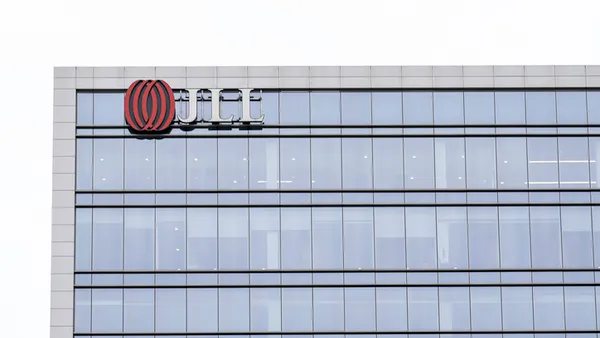Dive Brief:
- Tight margins and a challenging capital environment are expected to continue in 2024, with health systems and care providers optimizing real estate assets to cut costs and boost revenue, according to JLL’s 2024 healthcare real estate outlook released Wednesday.
- These strategies will include reevaluating and revamping staffing, refining processes and implementing AI to improve maintenance efficiency, plan facility usage more effectively and make real-time adjustments to assets like HVAC systems, the report says.
- The report underscores a continued shift from inpatient to outpatient care. Facilities managers can navigate the rise of outpatient locations by collaborating closely with medical groups and clinic directors, understanding their facility’s role in the broader healthcare plan and securing essential support from real estate operations, Jay Johnson, U.S. practice leader at JLL’s healthcare division, said in an interview.
Dive Insight:
With higher interest rates exacerbating financial pressures from wage growth, health systems could explore strategies like a sale leaseback or direct disposition sales to divest underutilized assets and release trapped capital, JLL says in its report. The real estate services firm says it expects higher levels of re-leasing in the next few years, citing research from Greenstreet. JLL’s report predicts that occupiers will carefully evaluate leases and owned assets to ensure they align with overall strategy. Rising rents will also help healthcare real estate owners address deferred maintenance, it says.
Wages are also rising, the report notes, pointing to a shortage of workers and difficulties with hiring and retaining facilities staff. “It has been a huge issue for the past few years,” Johnson said. “Those that are continuing to work in the space are demanding higher pay, so that’s making it difficult for the system from a financial standpoint.”
To address this shortage, Johnson recommends that industry leaders recruit professionals with desired skill sets from other industries; partner with technical and community colleges to attract students to careers in healthcare facilities management; and adopt technology to “better diagnose and identify ways of maintaining and operating buildings” so that “fewer workers are needed.” JLL’s report suggests that providing quality spaces — including those for rejuvenation during long shifts — can help reduce burnout and retain employees. Further, operators must balance these upfront improvement costs against the cost of recruiting and retaining new employees, it says.
Hospitals and providers will need to make adjustments in other areas of their business to accommodate sustained increases in wage growth, the report notes. It recommends utilization tracking as a tool that can drive efficiency by helping workers understand how they interact with their space.
Another trend the report highlights is the influence of new market entrants like technology firms, retail stores and private equity funds in accelerating the shift toward outpatient care services such as remote patient monitoring and adult care facilities.
Traditionally focused on hospitals and inpatient services, facilities managers must now “take ownership of the process of navigating that shift,” Johnson said. “Facilities managers need to understand they are responsible for the operation, engineering, maintenance and capital planning of outpatient care facilities, whether they do it themselves or lean on…landlords or outside service companies.” Practical approaches that Johnson recommends include aligning with the overall healthcare facility plan through regular interactions with various medical groups and outpatient services directors and implementing a variable staff model for managing portfolios of numerous smaller facilities across multiple locations.
To improve healthcare facilities planning and efficiency, health systems in 2024 will increasingly draw on AI as well, JLL says. That includes understanding how and where a provider’s time is spent and interpreting that data to plan facility usage, the report notes. As examples of this adoption, the report points to tools like Hank, which enables real-time adjustments to HVAC units and Infogrid, which employs sensors to oversee performance, improve cleanliness and maintenance and track energy consumption and emissions.














